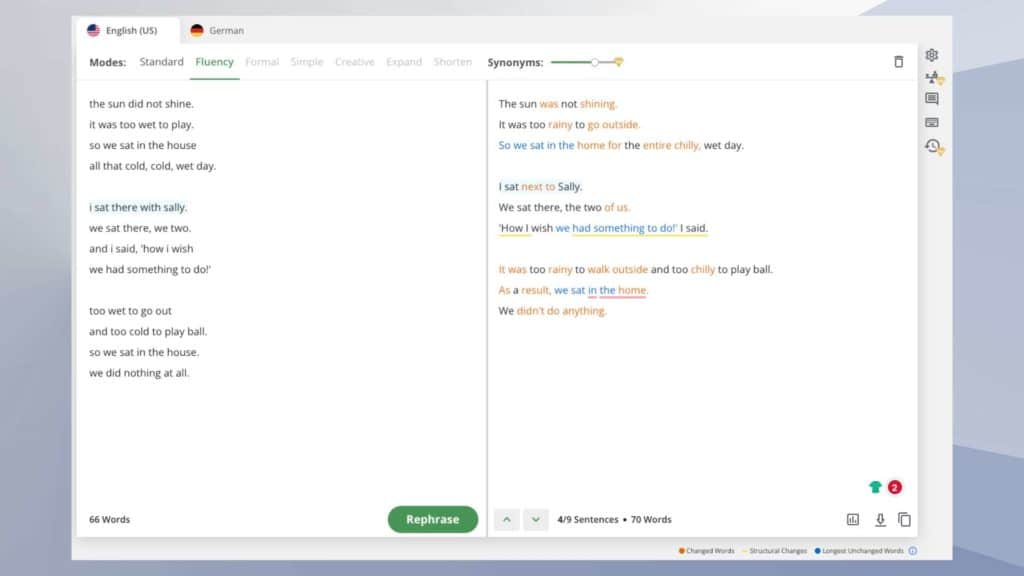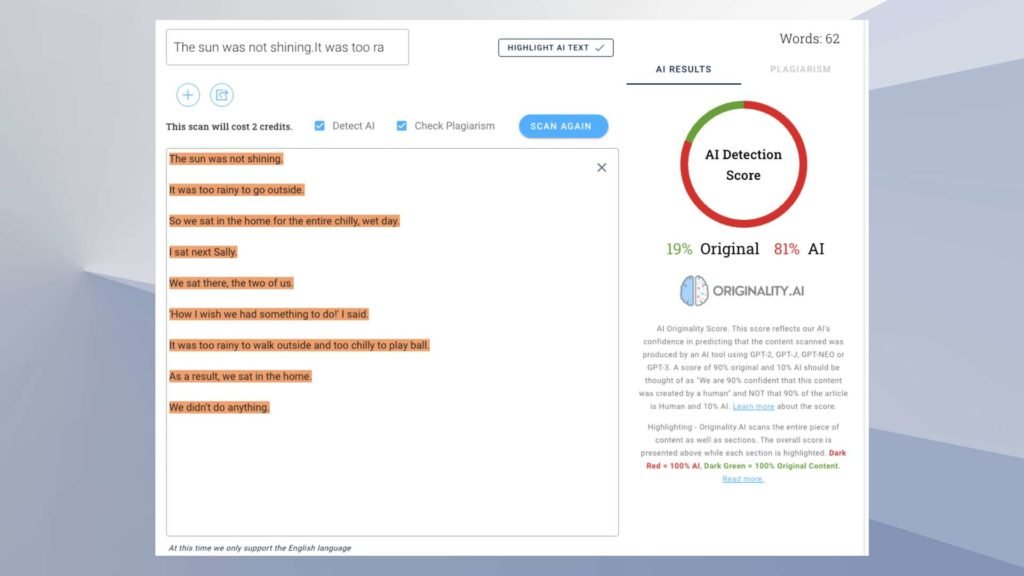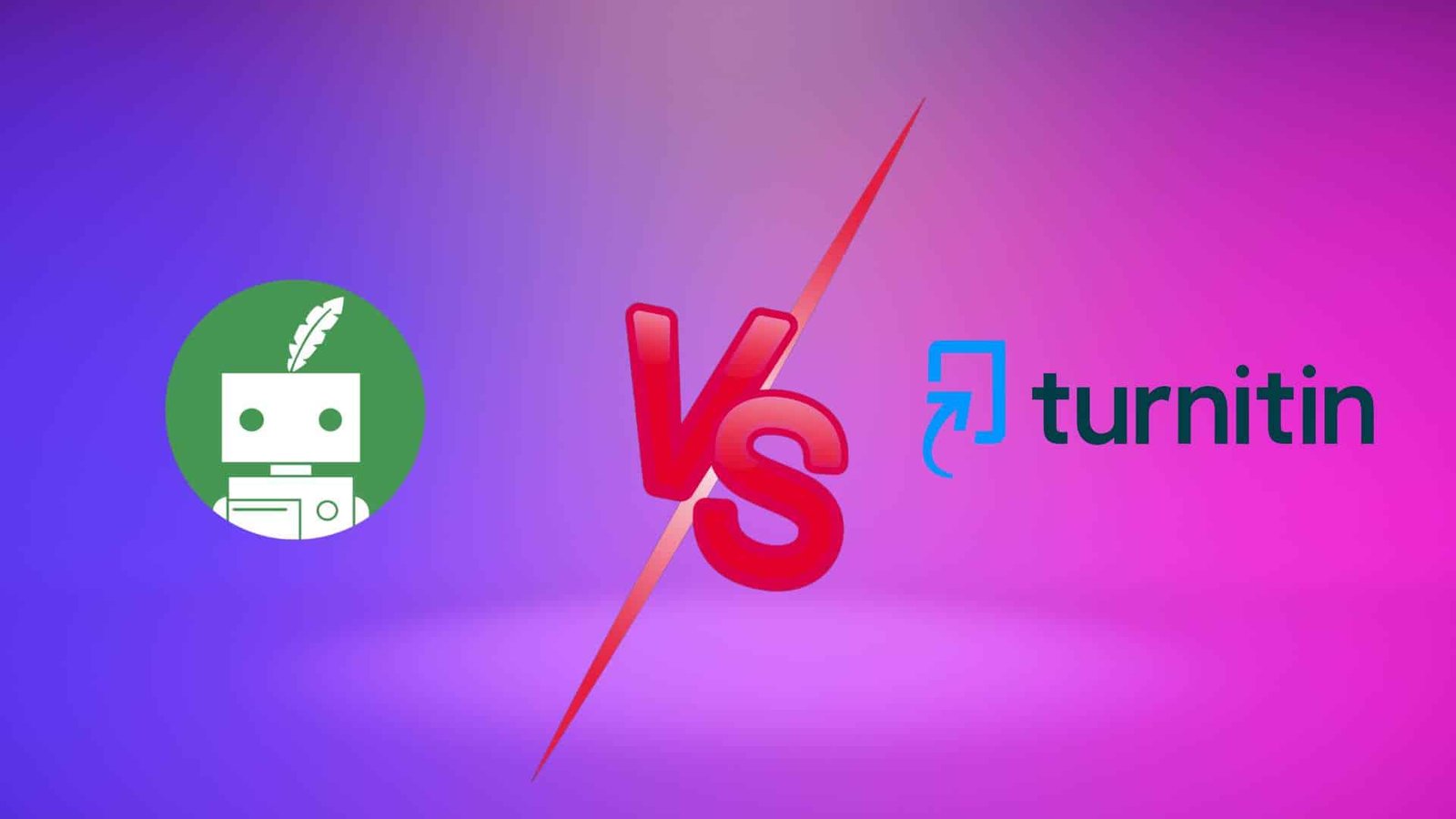Can Turnitin Detect Paraphrasing From QuillBot?
The integration of technology in education has led to the emergence of various online tools and services that students can access for academic purposes.
QuillBot, a widely used paraphrasing tool, is one such service designed to assist in rewording content and avoiding plagiarism by employing artificial intelligence.
The question, however, remains: Can QuillBot’s paraphrasing outsmart Turnitin, the renowned plagiarism detection software used by educators worldwide?
This article aims to answer that question by examining Turnitin’s method of detecting paraphrased content and offering tips for using these tools without getting caught.
Read on to discover more!
- Can Turnitin Detect Paraphrasing From QuillBot?
- What is QuillBot?
- An Overview of QuillBot’s Features
- What is Turnitin?
- Turnitin’s Paraphrasing Detection Process
- Factors Influencing Turnitin’s Paraphrasing Detection
- Tips To Avoid Detection by Turnitin
- Can AI Detectors Spot Quillbot Rewrites?
- Do Professors Know If You Use QuillBot?
- So, Can Turnitin Detect Paraphrasing From QuillBot?
Can Turnitin Detect Paraphrasing From QuillBot?
In most cases, the answer is no, Turnitin can’t detect content paraphrased by QuillBot.
Turnitin’s algorithms primarily search for exact word or phrase matches in its database, rather than identifying and detecting paraphrasing.
QuillBot alters words and their sequence in the text, making the paraphrased content appear unique.
That means, if you manually compare the source text and the text that QuillBot turned out, you can often still notice that it is the same text that was rewritten by an AI tool.
While QuillBot can potentially bypass Turnitin, students should prioritize academic integrity and use it as a learning tool rather than a cheating method.
What is QuillBot?
QuillBot is an artificial intelligence (AI)-powered paraphrasing tool designed to help users rewrite and rephrase text.
Its primary purpose is to assist writers in improving their writing style, enhancing readability, and avoiding plagiarism issues by generating unique content.
QuillBot offers multiple paraphrasing modes, such as Standard, Fluency, Creative, Formal, Shorten, and Expand, and integrates with popular writing tools like Microsoft Word, Google Docs, and Grammarly.

Its user-friendly interface makes it easy to use even for those with limited technical knowledge.
An Overview of QuillBot’s Features
QuillBot offers an array of features aimed at helping users create unique content that can pass Turnitin checks. These features include:
- Paraphrasing mode: Generates a rephrased version of the input text while maintaining the original meaning.
- Fluency mode: This mode focuses on improving the readability and flow of the text, making it ideal for polishing and refining content.
- Creative mode: As the name suggests, this mode generates more creative and diverse paraphrasing options, potentially offering more substantial changes to the original text.
- Formal mode: This mode is designed to convert informal or colloquial language into a more formal and professional tone.
- Shorten mode: This mode aims to condense the text while retaining its core meaning, making it perfect for summarizing or creating concise content.
- Expand mode: In contrast to the Shorten mode, the Expand mode elaborates on the original text, providing more detailed and extended paraphrasing.
What is Turnitin?
Turnitin is a sophisticated plagiarism detection software developed by iParadigms.
It aims to assist educators, academic institutions, and students in identifying and preventing plagiarism in submitted writing assignments.
Turnitin checks the authenticity of the text by comparing it against its extensive database of previous submissions, web pages, and other sources, detecting any copied content or similar patterns, phrases, and sentence structures.
Additionally, it helps identify citation errors by comparing in-text citations with popular bibliographic formats such as MLA, APA, and Harvard.
Turnitin also includes a grammar checker for identifying spelling and grammatical issues within the paper.
Turnitin has become a popular and effective service, widely used across numerous educational institutions worldwide to maintain academic integrity in student work by ensuring all content is original rather than copied from someone else’s writing.
Turnitin’s Paraphrasing Detection Process
Turnitin scans submitted assignments against a vast database of web pages, student papers, articles, and other sources.
It compares the text in the submission with matches found within its extensive database.
As a result, it can identify similar grammatical patterns or sentence sequences that might indicate copied content without proper citation.
The software also has built-in features such as a grammar checker and thesaurus, which help identify potential quotation errors or paraphrased content from external sources that may not have been adequately referenced with in-text citations or direct quotation marks.
This means Turnitin can effectively compare documents from Microsoft Word and Google Docs, even if they were not originally composed there, making it more challenging for students to bypass plagiarism checkers using online paraphrasing tools like QuillBot.
Factors Influencing Turnitin’s Paraphrasing Detection
Several factors affect Turnitin’s ability to detect paraphrasing from QuillBot, including the quality of the content, the length of the passage, and the plagiarism settings in Turnitin.
Understanding these factors can help students use QuillBot effectively while maintaining academic integrity.
- Quality of the content: High-quality content with complex sentence structures and phrases can make it difficult for Turnitin to detect paraphrasing. Conversely, low-quality content with grammatical and syntactical errors can also pose challenges for plagiarism detection software like Turnitin.
- Length of the passage: Longer passages are generally harder for Turnitin to detect. Shorter passages provide fewer words and phrases to check against the database, making it easier for the software to find matches.
- Plagiarism settings in Turnitin: Turnitin offers multiple settings for plagiarism detection, allowing users to customize their checks. Users can set basic preferences, such as accepting matching text from web pages or previous student submissions, and determine whether Turnitin should check for exact matches and find similar grammatical patterns within the text.
Tips To Avoid Detection by Turnitin
While using QuillBot, there are several strategies you can implement to further avoid detection by Turnitin. By following these tips, you can minimize the chances of your work being flagged as plagiarized.
Use Acceptable Text Sources
Always use reliable, credible, and verified text sources when conducting research for your assignments.
This includes peer-reviewed journals, books, and reputable websites.
By using high-quality sources, you enhance the credibility of your work and reduce the likelihood of unintentional plagiarism. Remember to cite all sources properly, according to the required citation style.
Longer Passages Are Harder To Detect
As mentioned earlier, Turnitin has a harder time detecting plagiarism in longer passages. When using QuillBot, consider paraphrasing longer paragraphs or multiple articles with similar sentence structures.
The artificial intelligence employed by QuillBot will help make your writing more unique and challenging for Turnitin to detect.
Use Different Synonyms and Antonyms
QuillBot’s inbuilt thesaurus provides you with a range of synonyms and antonyms for words in the text you’re paraphrasing. Make use of these suggestions to diversify your vocabulary and create more unique content.
This practice not only helps avoid detection but also enhances the quality of your writing.
Reorder Sentences and Phrases
Reordering and restructuring sentences and phrases within your paraphrased content can help create a new sentence flow, making it harder for Turnitin to detect similarities with the original text.
Experiment with different sentence orders and find ways to express the same ideas in various ways.
Combine and Split Ideas
When paraphrasing, consider combining or splitting ideas to create new sentences.
By merging two related sentences into one or breaking a complex sentence into simpler ones, you can further disguise the original text and avoid detection.
Use Transitional Words and Phrases
Incorporating transitional words and phrases into your paraphrased content can help create more natural-sounding sentences and improve the overall flow of your writing.
Transition words such as “however,” “in addition,” “on the other hand,” and “moreover” can help create a smoother connection between ideas while avoiding plagiarism detection.
Paraphrase with Purpose
Instead of merely using QuillBot to create a unique version of someone else’s work, use the tool with a specific purpose in mind.
For example, use QuillBot to help you simplify complex ideas, clarify unclear passages, or adapt the text to a specific audience. By doing this, you can ensure that your paraphrasing serves a legitimate purpose and maintains academic integrity.
Proofread and Edit
After using QuillBot to paraphrase your text, it’s essential to proofread and edit the content. This process allows you to correct any awkward phrasings, unusual word choices, or errors introduced during paraphrasing.
By carefully reviewing and refining your work, you can create a polished final product that is less likely to be flagged by Turnitin.
Follow these tips and use QuillBot responsibly, and maintain academic integrity while still benefiting from the convenience and assistance that QuillBot provides.
Always prioritize producing original work, understanding the concepts you write about, and using QuillBot as a learning aid rather than a shortcut for cheating.
Can AI Detectors Spot Quillbot Rewrites?
This is the critical part of this text. While Turnitin won’t spot your QuillBot use in many cases, that still doesn’t mean that you’re in the clear.
Even though the check came back clear for plagiarism if you put the text through an advanced AI content detector, it will most likely be spotted as being written by AI.
I took the text from “Cat in the Hat” that QuillBot paraphrased above and put it through probably the most advanced AI content detector on the market, Originality.ai.
Have a look at the results:

Originality.ai had no problems spotting the AI-produced content, even though it may have passed the plagiarism check and could have fooled Turnitin.
Do Professors Know If You Use QuillBot?
While Turnitin might not always detect paraphrasing from QuillBot, experienced educators may still be able to identify if a student has used the tool.
Professors often become familiar with their students’ writing styles, and sudden deviations in style or tone may raise suspicion.
Additionally, some paraphrased content may not sound entirely natural or may contain unusual word choices, which could alert professors to potential paraphrasing.
In the end, you also have to remember that you’re mainly hurting yourself by using tools like QuillBot extensively. Instead of trying to use QuillBot or other AI tools to cheat, use them as a tool to speed up your learning.
Always ensure that you understand the concepts you’re writing about and use QuillBot to refine your language, not to substitute original thought and effort.
So, Can Turnitin Detect Paraphrasing From QuillBot?
Turnitin may not always detect paraphrasing from QuillBot, as the tool employs artificial intelligence to generate unique content that can bypass some of the software’s detection methods.
However, factors such as content quality, passage length, and Turnitin’s plagiarism settings can impact the software’s ability to identify paraphrased content.
To maintain academic integrity and avoid detection, use reliable text sources, choose longer passages, make use of different synonyms, and reorder sentences.
Remember that QuillBot should be used as a learning aid rather than a method for cheating.
Always strive to produce original work, properly cite external sources, and focus on genuinely understanding the concepts you write about.






